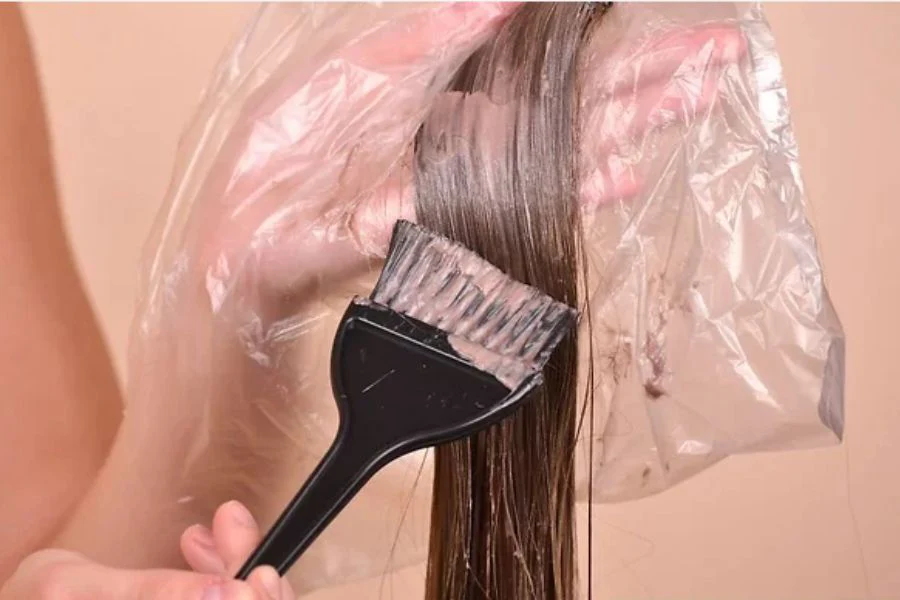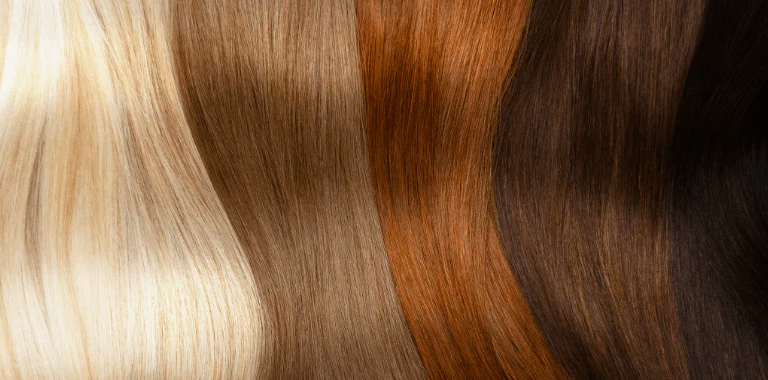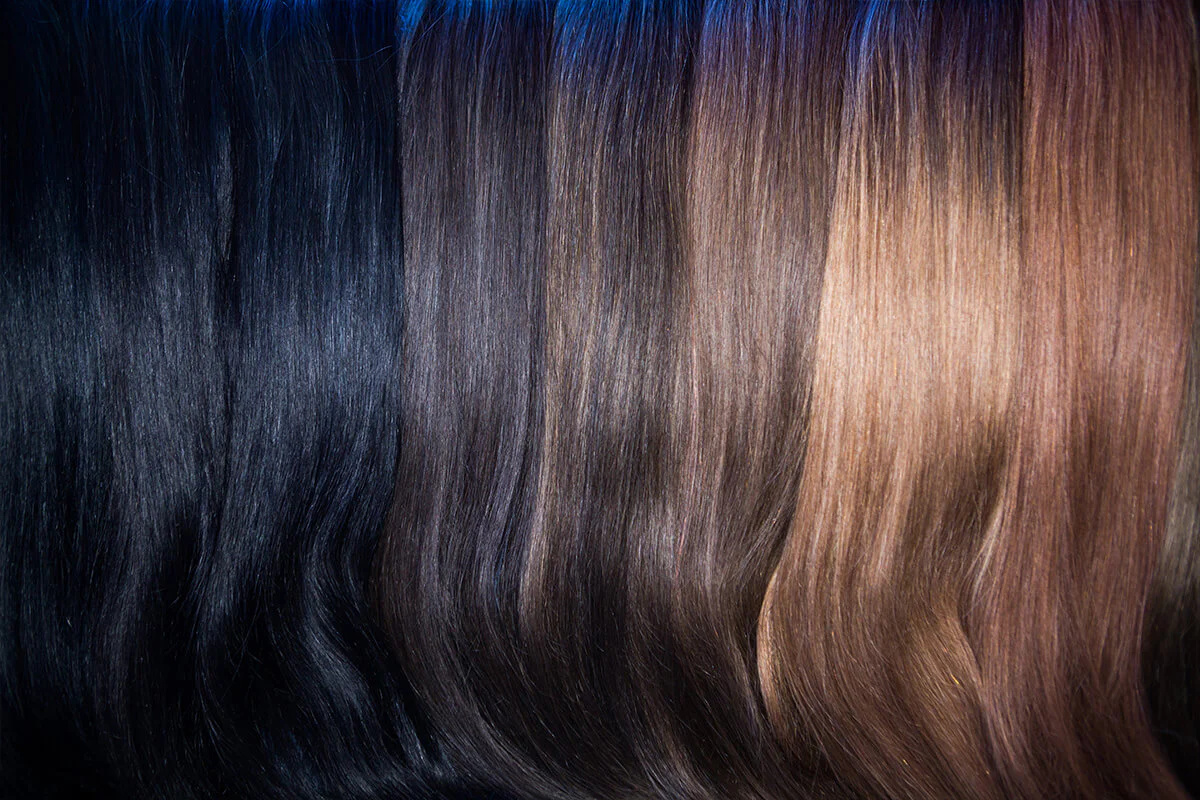How Many Times Can I Dye My Hair Extensions? Here’s What You Need to Know
You might be wondering, "How many times can I actually dye my hair extensions without ruining them?" Well, in my experience, you can typically dye human hair extensions1 2-3 times. Of course, this depends on a few crucial factors like the quality of the extensions and how well you care for them. Dyeing extensions darker can sometimes allow for additional color changes, but each one translates into stress on the hair. Remember, after any coloring process, deep conditioning2 is your best friend. Not to mention, synthetic extensions3 should be a no-go for any dye job. Let's dive into the depths of these guidelines to beautify your extensions without sacrificing their longevity.
How Many Times Can You Dye Extensions?
Dive Deeper
The journey of coloring hair extensions is as nuanced as the journey of coloring your own hair. Just like your natural strands, human hair extensions1 have their limits. Quality plays the starring role here. The higher the quality, like the premium offerings from brands like Plucharm Hair4, the more flexibility you typically have.
Take the following table, for instance, which helps illustrate the relationship between hair quality and the number of times you can safely dye it:
| Quality Level | Times You Can Dye | Recommended Care Actions |
|---|---|---|
| Premium (e.g., Plucharm Hair4) | Up to 3 | Deep condition regularly, use sulfate-free dyes |
| Mid-tier | 2 | Use protective serums, avoid excessive heat |
| Low-quality | 1 or rarely 2 | Focus on upkeep, avoid strenuous treatment |
From my experience with Plucharm Hair4, which deeply values quality control and customizing for various hair needs, their hair extensions often allow for up to three dye jobs if cared for well. However, knowing when enough is enough is crucial—overdoing it can lead to dryness and brittleness.
What's the Hardest Color to Get Out of Hair?
Dive Deeper
Have you ever fallen in love with a color, only to find it's a nightmare to remove? We've all been there, trust me. The hardest hues to remove from hair, including extensions, are generally reds and blacks. These colors often penetrate deeply into the hair shaft. In fact, I've had clients whose stunning blood-red hues muted into a faded pink—definitely not what they had in mind!
Such cases typically require more rigorous stripping or bleaching, which can be unfriendly to the integrity of hair extensions. Brands specializing in premium virgin hair, like Plucharm Hair4, excel in maintaining the hair's natural health, but even the best strands can grow weary under chemical duress.
Pro Tips:
- When in doubt, consult a professional—escaping a color rut can be a sticky situation.
- Embrace semi-permanent dyes5 for easier changes.
- Pre-dye your hair extension a few levels lighter than natural for better color payoff.
Is it Okay to Dye Hair Extensions?
Dive Deeper
The simple answer? Yes, but with caution. Dyeing hair extensions isn't inherently bad, but it’s a discipline requiring knowledge. Not all hair can handle the often harsh chemicals of dyeing without protest.
Consider these nuances:
- Human vs. Synthetic: You can dye human hair extensions1, but synthetic hair is another ballgame. Imagine trying to paint plastic; the results would unlikely be pretty.
- Color Consistency: Achieving a consistent color match between your extensions and natural hair can be a delicate dance. Ideal brands come with pre-blended color choices that can mimic the multitude of hues in natural hair—making the process far smoother.
For companies like Plucharm Hair4, who aim to provide globally acclaimed virgin hair extensions, dyeing isn't seen as a risk but rather an enhancement—when carried out with care.
Expert Insight:
Plucharm Hair4 offers an astounding range of more than 200 trendy colors. Intriguingly, their stress on maintaining the hair shaft's health even post-coloration sets them apart in this saturated market.
How Soon is Too Soon to Dye Hair Again?
Dive Deeper
Understandably, you might want to switch up your look with the seasons or an upcoming event. But how soon is too soon? Generally, you should allow at least four weeks between dye jobs to let the staggering of dye-cycles work without staggering the hair!
Rushing the frequency can stress out not just the physical extensions but may even annoy the client-dye relationship. Cultivating patience alongside artistry often yields the best results. A slower, more deliberate approach respects both the hair quality and style longevity that beauty demands.
Did you know?
Some experts suggest using heat-protectant sprays6 and silk pillowcase7s to prolong color life and vibrancy, supporting both dyed natural hair and extensions. These small steps are game-changers for those avid about exploring chromatic deviations more frequently.
Conclusion
In the grand spectrum of hair coloring, human hair extensions1 occupy a special niche. They offer endless possibilities for creativity and expression. However, their potential is only fully realized through informed care and smart decisions—like choosing premium quality8 from trusted experts such as Plucharm Hair4. Dye them carefully, treat them kindly, and let them eloquently whisper tales of sophistication and style.
Coloring your extensions is undeniably an art dolled up in science—it involves balance, patience, and a dash of daring. But when pursued thoughtfully, the hues become a part of the vivid tapestry that defines your individuality, one beautiful strand at a time.
-
Explore the advantages of human hair extensions for a natural look and feel, enhancing your styling options. ↩ ↩ ↩ ↩
-
Learn how deep conditioning can prolong the life and vibrancy of your hair extensions. ↩
-
Understand the limitations of synthetic extensions and why they don't respond well to dye. ↩
-
Discover why Plucharm Hair is renowned for quality and customization, ensuring your extensions look stunning. ↩ ↩ ↩ ↩ ↩ ↩ ↩
-
Explore the benefits of semi-permanent dyes for easier color changes without damaging your hair. ↩
-
Discover how heat-protectant sprays can extend the life of your hair color and keep it vibrant. ↩
-
Learn why switching to a silk pillowcase can protect your extensions and improve hair health. ↩
-
Learn why investing in premium quality hair extensions can enhance your overall look and longevity. ↩




